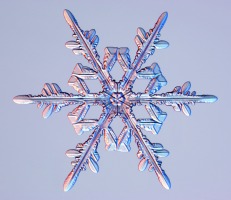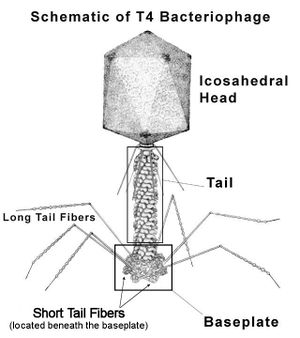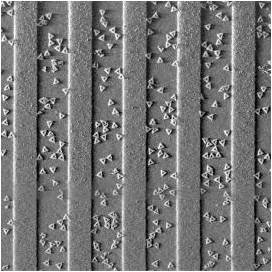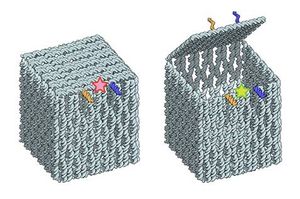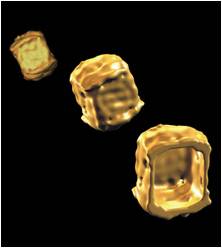Main Page
Welcome to the self-assembly group wiki. The purpose of this website is to serve as a common repository for papers and articles in the field of algorithmic self-assembly, as well as a technically oriented, easy to use wiki about self-assembly topics. Researchers in the area are invited and encouraged to contribute content including wiki articles, papers, and software. Please email mpatitz@self-assembly.net if you are interested in contributing.
This material is based upon work supported by the National Science Foundation under Grant Nos. CCF-1117672, CCF-1422152, and CAREER-1553166. Any opinions, findings and conclusions or recommendations expressed in this material are those of the author(s) and do not necessarily reflect the views of the National Science Foundation (NSF).
What is self-assembly?
Self-assembly is the process during which a collection of relatively simple components, starting in a disorganized state, autonomously combine into a more complex structure. During self-assembly, there is no external guidance or direction, and the self-assembling components experience only local interactions and typically obey a simple set of rules that govern how they combine.
Self-assembling systems abound in nature, and include the formation of everything from snowflakes, to biological structures (e.g. viruses), to galaxies. Nature creates some of the most complex structures known using self-assembly, and we attempt to study and understand these natural systems so that we can create novel, artificial self-assembling systems. The eventual goal is atomically precise manufacturing, in which the end products are produced so that their constituent atoms and molecules are completely positioned by design. This promises the creation of materials which are smaller, stronger, lighter, and in possession of additional desired properties that traditional materials can't match.
Even though this research field is still young, there are already exciting examples of nanoscale self-assembly occurring in laboratories around the world. For example, work is being done to use self-assembly to guide the fabrication of next generation processors, and researchers have created boxes made out of DNA which may eventually be used to deliver drugs to highly specific targets in the body.
Pioneers in self-assembly research realized the potential for new systems to be algorithmically driven; that is, they can be guided by lists of instructions, similar to computer programs. This has resulted in a rich body of research into algorithmic self-assembly, which constitutes the bulk of the content on this site.
Getting Started in Self-assembly
Beyond the purely mathematically interesting properties of self-assembling systems, such systems have been recognized as an excellent template for the fabrication of artificial structures on the nanoscale. In order to precisely manipulate and organize matter on the scale of individual atoms and molecules, several artificial self-assembling systems have been designed. In order to model such systems, theoretical models have been developed, and one of the most popular among these is the Tile Assembly Model introduced by Erik Winfree in his 1998 PhD thesis. Formulated in two basic versions, the abstract Tile Assembly Model (aTAM) and the kinetic Tile Assembly Model (kTAM), it was based on a cross between the theoretical study of Wang tiles (flat squares with colored markings on their edges and matching rules for the ways those edges can be placed next to each other) and novel DNA complexes being synthesized within Ned Seeman's laboratory. The aTAM provides a more high-level abstraction which ignores the possibility of errors and provides a framework for theoretical studies of the mathematical boundaries to the powers of such systems. The kTAM, on the other hand, injects more of the physical reality of the chemical kinetics into the model and allows for the study of the causes of errors and potential mechanisms for detecting, preventing, and/or correcting them. In fact, the kTAM serves as such a realistic model that it has helped to accurately predict and shape the experimental direction of several laboratory experiments in which actual tile-based assemblies form. Just a few examples of laboratory implementations include designs from binary counters, to the fractal pattern known as the Sierpinski triangle, to implementations of sophisticated error prevention techniques. Tile-based self-assembly has proven to be a very rich area of research, and the early proof of its computational universality by Winfree showed that it can be algorithmically directed (putting it into the general field of algorithmic self-assembly).
If the reader is new to self-assembly, we recommend learning about the following topics in this order: the first model to explore is the aTAM. Next, look at the page on the kTAM. Then become familiar with the Two-Handed Assembly Model (2HAM), in which, rather than requiring seeded assemblies which can grow only one tile at a time, assemblies can spontaneously nucleate and arbitrarily large assemblies are allowed to combine with each other two at a time. After building a solid intuition for these models, the reader should feel free to skip around to models as they wish, such as the STAM. Also, it may be valuable to play around with the ISU TAS simulator to visualize and develop tile assembly systems.
Site contents
- Topics in self-assembly
- List of papers
- List of theses
- List of conferences
- List of open problems
- List of software
- People
- Resources for Instructors
- Add a paper

